Scientist of the Day - Annibale de Gasparis
Annibale de Gasparis, an Italian astronomer, was born Nov. 9, 1819. Gasparis worked as an assistant to the director of the Astronomical Observatory of Capodimonte in Naples, which had been founded in 1812 and was one of the best-equipped observatories in Italy. In particular, Capodimonte had a number of telescopes built by the Reichenbach and Utzschneider optical firm in Munich. In 1848, Gasparis began using one of those instruments, the one shown below (second image), to search for new planets, or, as they were sometimes called, asteroids, and now, minor planets.
The first asteroid or minor planet, Ceres, had been discovered on the first day of the 19th century (Jan. 1, 1801) by Giuseppe Piazzi at Palermo in Sicily. Within six years, three more had been revealed: 2 Pallas, 3 Juno, and 4 Vesta, using the terminology we now employ for minor planets, with the number denoting the order of discovery. After 1807, new asteroids ceased to appear, and so the list stood at 4 for nearly forty years, until, unexpectedly, the German Karl Hencke discovered 5 Astraea in 1845, and then 6 Hebe in 1847. The Englishman John Russell Hind followed with 7 Iris and 8 Flora in 1847. Astronomers hoping to find new planets got excited again and renewed their searches for moving blips along the ecliptic, where all the asteroids had been found. Gasparis joined the hunt, and he was almost as successful as Hind, whom we have already profiled with a post. Hind discovered 10 asteroids and Gasparis found 9. But since one of Hind’s discoveries, 14 Irene, was spotted independently by Gasparis, but is not included in Gasparis’s list, they were really dead even, and both men deserve joint ranking as the two most successful asteroid hunters in the mid-19th century.
Gasparis's first discovery was 10 Hygiea, which he spotted on Apr. 12, 1849, followed by 11 Parthenope on May 11, 1850. The discoveries were announced in the Tempo di Napoli, and then sent on to Heinrich C. Schumacher, the editor of the Astronomische Nachrichten at Altona Observatory in Hamburg, who sent out world-wide circulars announcing the discoveries. These announcements were then reprinted by journals in various countries, and in particular, by a new journal in the United States, the Astronomical Journal, founded in 1849 and edited by Benjamin A. Gould. When we wrote our post on Hind, we illustrated his discoveries with the announcements that appeared in the Astronomical Journal, and we will do the same here, as it is easier for English-speaking readers to follow, and because we have all the early issues of the Astronomical Journal in the Library.
We see above (third image) a translation of the announcement from Altona of the discovery of 11 Parthenope, just as Schumacher had sent it out. It not only gives the location of the new planet, but it reveals that when 10 Hygiea was discovered a year earlier, the eminent English astronomer John Herschel had let it be known that he wished the Neapolitans had named it Panthenope, after the mythical siren who supposedly founded Naples. Gasparis, wishing to oblige the esteemed Englishman, took his suggestion for the name of his next discovery.
Gasparis discovered 13 Egeria on Nov. 2, 1850. Gould announced this discovery with a new kind of press release, called here an "Extra" (fourth image). This was the first American astronomical circular, a separately printed and mailed sheet that allowed for the rapid dissemination of new discoveries, and which would be used for the next century and a half, until the advent of email announcements. This first circular was printed up and mailed out on Dec. 2, 1850, a month after the discovery, so it wasn't exactly instantaneous. With the laying of the Atlantic cable fifteen years later, that time would come down considerably.
The other asteroids discovered by Gasparis were: 15 Eunomia (1851), 16 Psyche (1852), 20 Massalia (1852), 24 Themis (1853), 63 Ausonia (1861), and 83 Beatrix (1865). It is interesting that the word “asteroid" was missing from the early American announcements. These were considered by editors and discoverers to be planets, and there was nothing minor about them. The term "asteroid" first appeared as a label in the Astronomical Journal in 1852, when Gould published a table showing the names, numbers, dates of discovery, and symbols (which Gould argued should be abandoned) of the first 15 asteroids, a term he used in the title (fifth image). 10, 11, 13, 14, and 15 were all discovered by Gasparis, although he lost credit for 14 to Hind.
In 1852, Hind published a small book about the solar system, mainly, I think, to feature his asteroid discoveries, but he did give equal time and space to those of Gasparis. Since the discovery of 10 Hygiea came too early for the Astronomical Journal to announce it, we show here a detail of the page in Hind’s book where he discussed Gasparis’s first asteroid (sixth image). Hind noted that Gasparis initially added the adjective Borbonica to Hygiea as a patronage gesture, like Galileo’s Medicean stars, but it is considered an “unnecessary appendage” by astronomers and Hind has already dropped it.
Of all the asteroids discovered by Gasparis, the first, 10 Hygiea, is the most interesting to us today, because it turns out to be the fourth-largest asteroid in the entire solar system, after 1 Ceres, 4 Vesta, and 2 Pallas. It is some 270 miles across and was recently imaged by the Very Large Telescope array in Chile. It is historiographically unsound to introduce that image here, but what the heck, here it is (seventh image). Some think the spherical shape means that it meets the criteria for being named a dwarf planet, like Ceres and Pluto. We shall see.
One thing I like about Gasparis is the resolution of his moral compass. There were revolutions in many European nations in 1848, including in various Italian states. The director of Capodimonte, Gasparis’s boss, sympathized with the dissidents, and he was accordingly relieved of his directorship in 1850 by the Bourbon government. Gasparis was offered the position, and he refused it. Not until the director died, 14 years later, did Gasparis feel that it was ethical for him to assume the position, which he did, and he then ran Capodimonte with competence for the next 25 years.
I have not visited Capodimonte Observatory, but they apparently devote a large part of their public space to a museum displaying the historic instruments acquired in its first decades of existence, including the telescope used by Gasparis in making his discoveries (second image). One should applaud observatories (and any institutions) that work to preserve the physical trappings of their heritage.
William B. Ashworth, Jr., Consultant for the History of Science, Linda Hall Library and Associate Professor emeritus, Department of History, University of Missouri-Kansas City. Comments or corrections are welcome; please direct to ashworthw@umkc.edu.

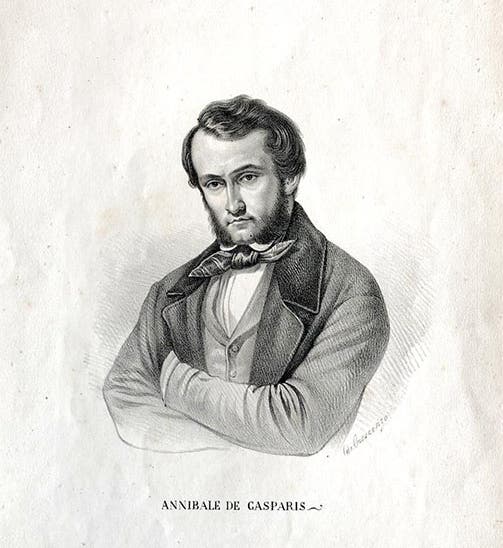
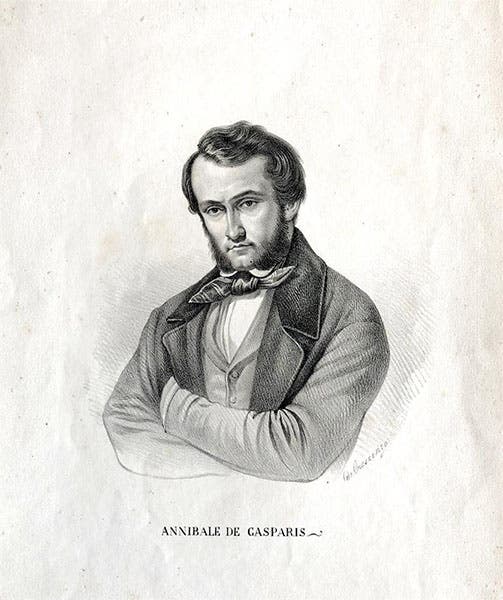
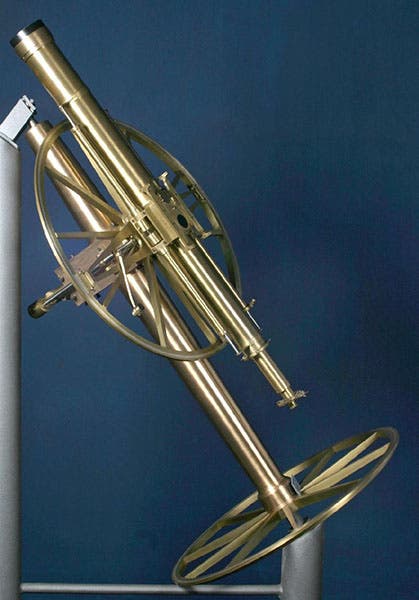
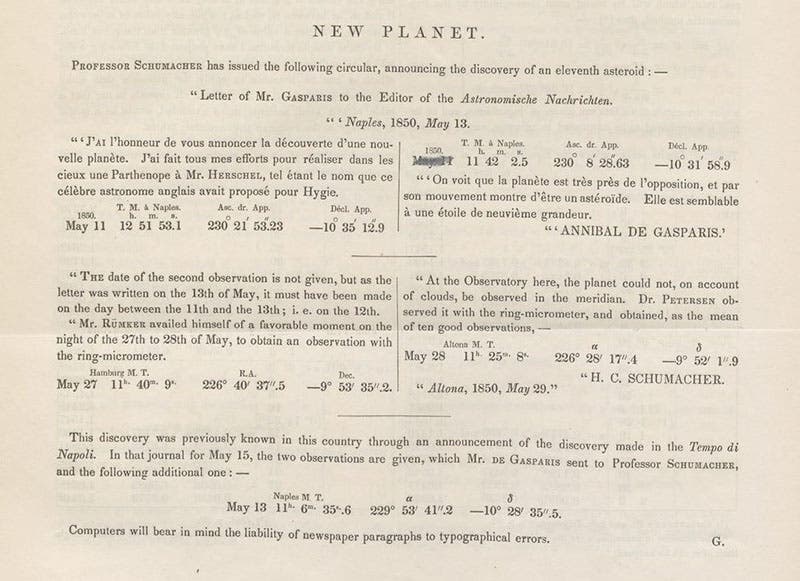
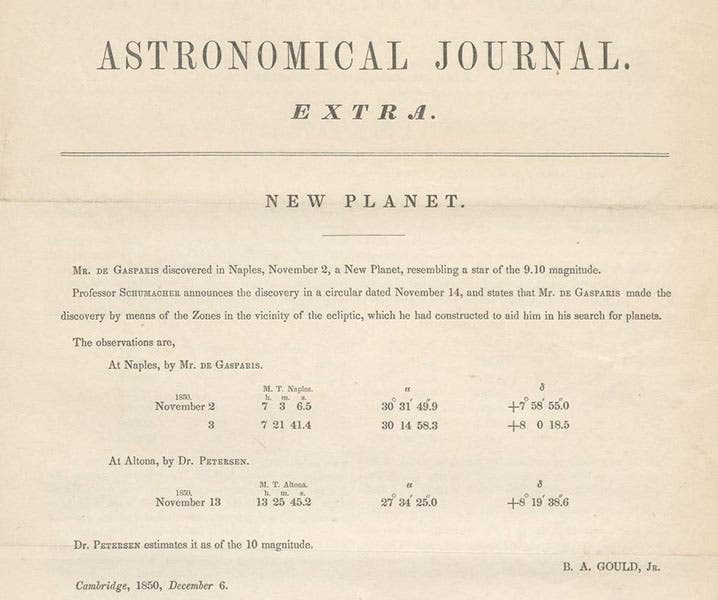
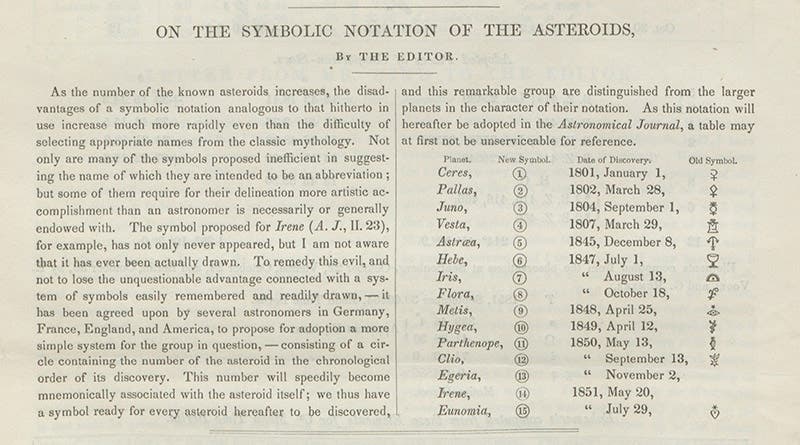
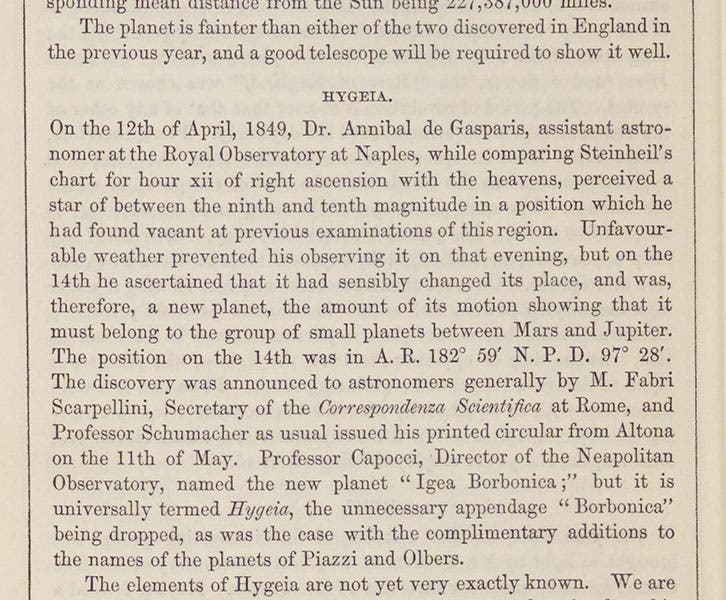
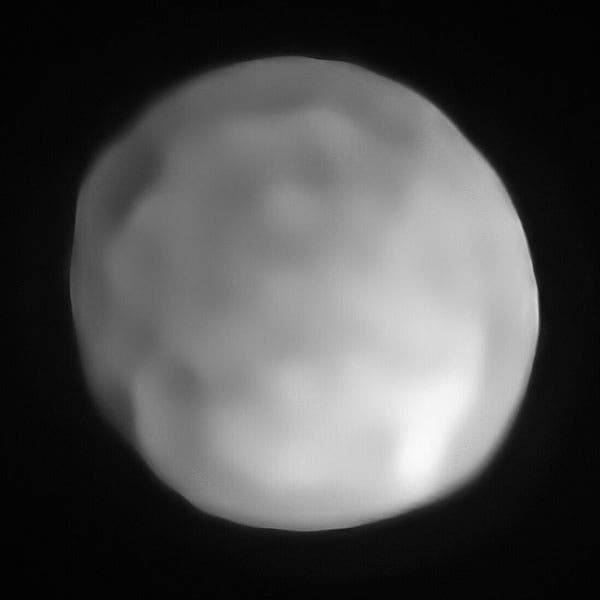


![Using an astrolabe to measure the depth of a well, woodcut in Elucidatio fabricae vsusq[ue] astrolabii, by Johannes Stöffler, 1513 (Linda Hall Library)](https://assets-us-01.kc-usercontent.com:443/9dd25524-761a-000d-d79f-86a5086d4774/a998eb50-55d2-4a88-ace2-a50aa5fa86e7/Stoffler%201.jpg?w=210&h=210&auto=format&fit=crop)

